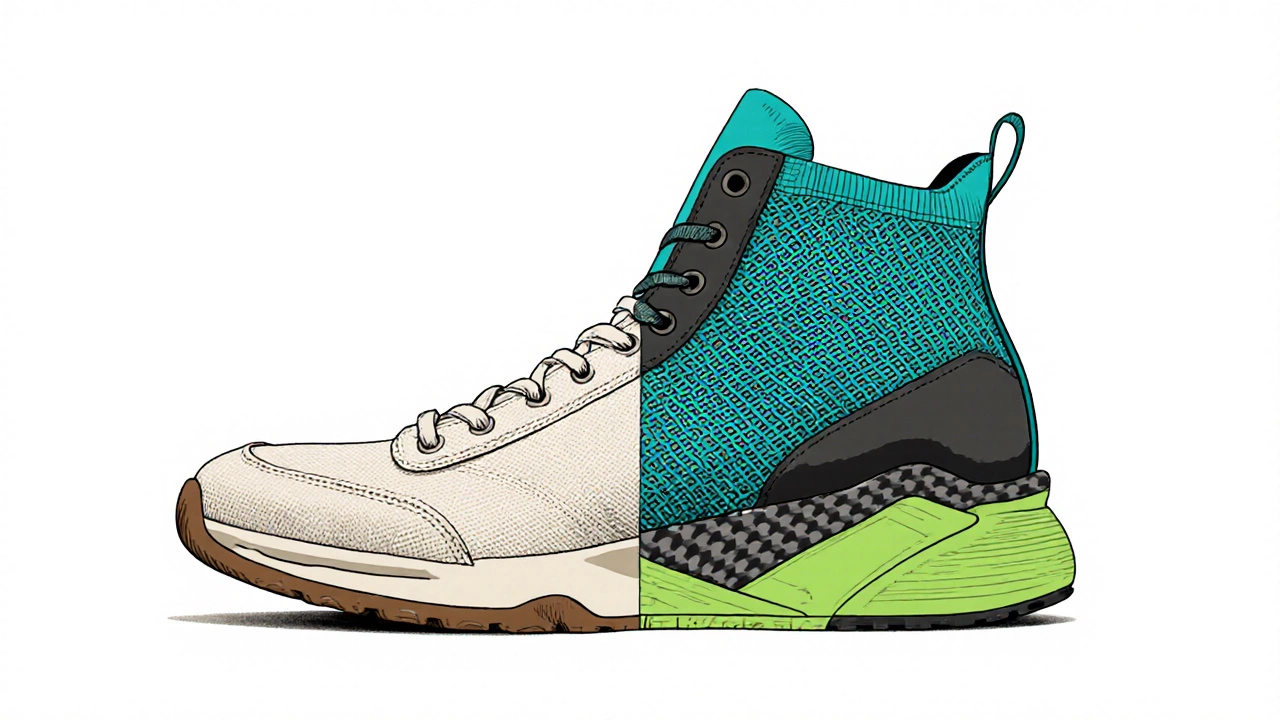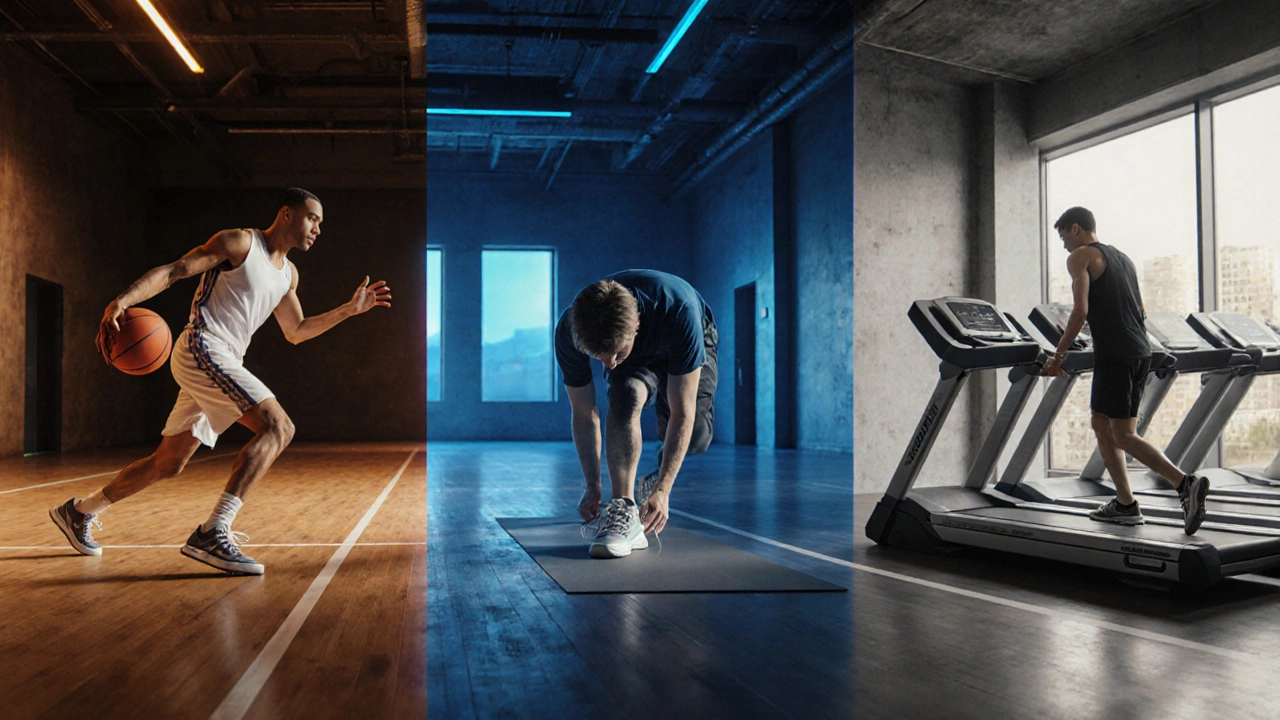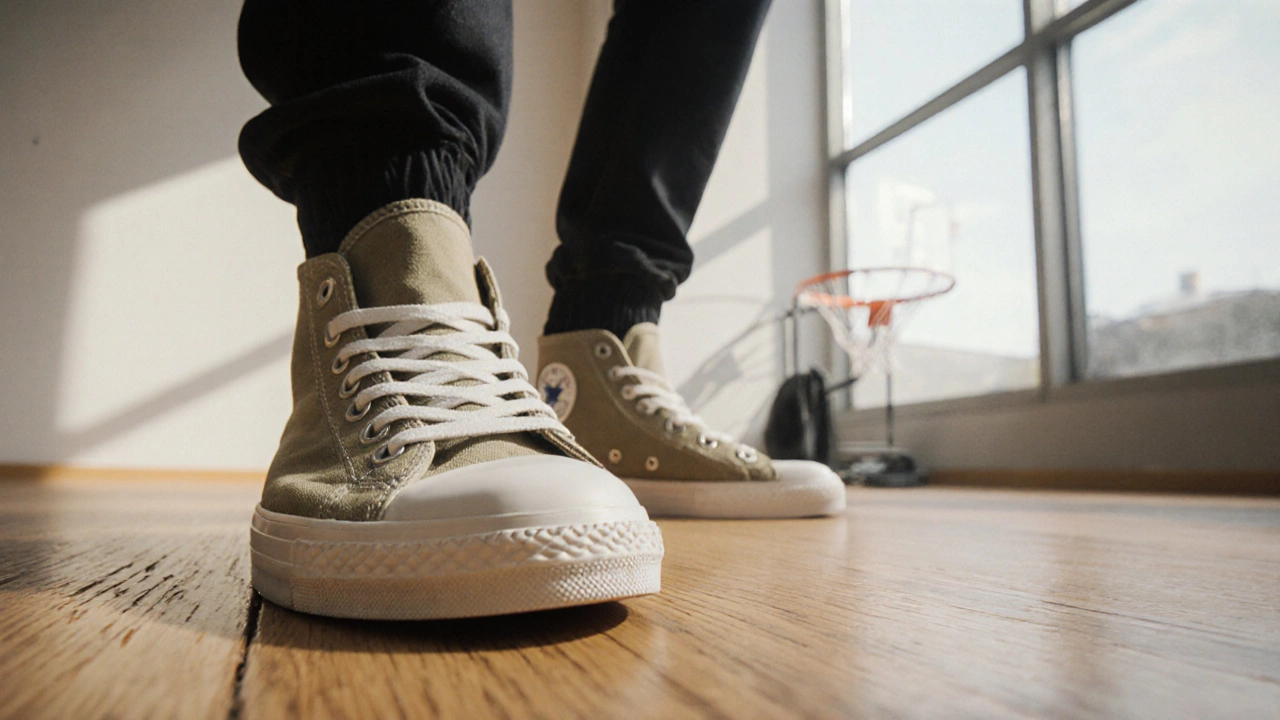Converse Trainer Suitability Calculator
Activity Assessment
Answer a few questions to determine if Converse shoes are suitable for your activity.
When you slip on a pair of classic Converse American footwear brand best known for its canvas sneakers, you might wonder: does that make you a runner, a basketball player, or just someone with a cool style? The line between a casual sneaker and a true trainer can feel blurry, especially when the same shoe appears on the runway and the gym floor.
Key Takeaways
- "Trainer" is a broad term that covers any shoe designed for sport or physical activity.
- Traditional Chuck Taylor All Star iconic canvas sneaker released by Converse in 1917 lacks the cushioning and support typical of modern trainers.
- Converse can work for light‑weight activities like casual basketball or quick gym sessions, but they’re not ideal for high‑impact running or intense training.
- If you need a shoe for specific sport performance, look for models with specialized midsoles, arch support, and shock‑absorbing outsoles.
- Style‑first choices often sacrifice performance; know when to prioritize comfort over fashion.
What Exactly Is a “Trainer?”
A trainer any shoe engineered for athletic activity, usually featuring supportive midsoles, breathable uppers, and durable outsoles is built to handle repeated impact, lateral movement, and specific sport demands. In the UK and Australasia, “trainer” is the everyday word for what Americans call a "sneaker" or "tennis shoe." The key ingredients are:
- Midsole technology - EVA foam, PU, or proprietary gels that absorb shock.
- Outsole tread patterns - designed for grip on courts, tracks, or trails.
- Upper construction - often mesh or engineered knit for breathability and stability.
- Support features - heel counters, arch plates, and ankle collars.
When a shoe contains most of these elements, it earns the trainer label.
Brief History of Converse and Its Signature Model
Founded in 1908, Converse started as a rubber shoe manufacturer before pivoting to basketball footwear. The Chuck Taylor All Star, introduced in 1917 as the "Converse All Star," was endorsed by basketball player Chuck Taylor in 1921 and quickly became the go‑to court shoe. Its canvas upper, rubber toe cap, and simple lace‑up design were revolutionary for the era, providing lightweight freedom compared to leather basketball shoes of the time.
Over the decades, the silhouette stayed almost unchanged. While fashion embraced the shoe for its retro vibe, performance technology moved on. Modern trainers now sport engineered foams, carbon plates, and high‑tech uppers-features the classic Chuck simply doesn’t have.

Design Features That Set Converse Apart
The All Star’s defining traits are:
- Canvas upper: breathable but offers limited support.
- Flat rubber sole: thin, providing direct ground feel but little shock absorption.
- Absence of midsole cushioning: no EVA or gel layers.
- Minimal arch support: relies on the foot’s natural mechanics.
These choices make the shoe perfect for casual wear, street style, and light‑impact activities like short‑duration basketball pickup games. However, the same attributes can turn a jog into a sore‑foot session when you hit the pavement for miles.
Converse vs. Typical Trainers: A Side‑by‑Side Look
| Feature | Converse All Star | Typical Modern Trainer |
|---|---|---|
| Upper Material | Canvas (100% cotton) | Engineered mesh or knit (synthetic blend) |
| Midsole | None (flat rubber) | EVA foam, PU, or proprietary gel |
| Outsole | Thin rubber tread | Durable carbon rubber with sport‑specific pattern |
| Cushioning | Minimal | Hip‑level impact absorption |
| Arch Support | Low | Integrated arch plate |
| Price (USD) | $55-$70 | $90-$150 |
| Typical Use | Casual, light sport, fashion | Running, training, court sports |
When Can You Treat Converse as a Trainer?
Even without high‑tech midsoles, Converse can still serve as a functional trainer for specific, low‑impact scenarios:
- Indoor basketball: The thin sole offers great board feel, making quick cuts easier. Just limit sessions to under 30 minutes to avoid foot fatigue.
- Gym classes with minimal jumping: Activities like yoga, light weight‑lifting, or pilates benefit from the shoe’s flexibility.
- Short sprints on smooth surfaces: A quick dash across a gym floor or a grassy field works, but long runs will feel hard.
For high‑impact workouts-think HIIT, long runs, or aggressive court play-most athletes reach for a shoe that actually cushions the landing. In those cases, a traditional trainer beats a Converse handily.
Pros and Cons of Using Converse as a Trainer
| Pros | Cons |
|---|---|
| Lightweight and highly breathable | Very little shock absorption |
| Affordable price point | Lacks arch support, can cause fatigue |
| Classic style that matches many outfits | Flat sole offers limited traction on slick surfaces |
| Easy to break in | Canvas can wear quickly under intense use |

Buying Guide: Choosing the Right Shoe for Your Activity
Before you decide whether a pair of Chuck Taylors will do the job, ask yourself these three questions:
- What’s the primary activity? If it’s casual walking, a fashion‑first shoe works. For running, look for cushioning and stability.
- How much impact will you generate? High‑impact sports demand midsoles that compress and rebound. Low‑impact activities can get by with a flat sole.
- Do you need support? Flat‑footed runners or anyone with plantar fasciitis should prioritize arch plates and heel counters.
If your answer leans toward high impact or strong support, treat Converse as a style shoe, not a performance trainer. Brands like Nike global sportswear giant known for innovative training footwear and Adidas German sports apparel company with extensive trainer lines offer options that match modern sport science.
Alternative Sneakers That Blend Style and Function
If you love the retro vibe of Converse but need more performance, consider these hybrids:
- Vans Old Skool Platform: Canvas upper like Converse with a slightly thicker rubber sole for marginal cushioning.
- New Balance 574: Suede and mesh mix, offering a modest EVA midsole while keeping a classic silhouette.
- Adidas Originals NMD: Looks street‑ready but incorporates Boost cushioning for daily runs.
These alternatives preserve a laid‑back aesthetic while giving your feet the support they crave during longer sessions.
Bottom Line: Is Converse a Trainer?
The short answer: Converse trainer is a conditional label. In the strict sense of modern footwear taxonomy, classic Chuck Taylors lack the engineered midsoles and support systems that define a true trainer. They excel as casual sneakers and can handle light‑weight, short‑duration sport activities, but they fall short for serious training, running, or high‑impact workouts.
So, if you’re heading to a coffee shop or a quick pick‑up basketball game, go ahead-your Converse will do fine. If you’re logging miles on the road or hitting the gym for a HIIT session, invest in a shoe built for that purpose. Knowing the difference helps you stay comfortable, avoid injuries, and keep your style game strong.
Frequently Asked Questions
Can I wear Converse for daily jogging?
For short, easy‑pace jogs on soft surfaces, Converse can manage, but the lack of cushioning will make longer runs uncomfortable and increase injury risk. Opt for a dedicated running shoe for anything beyond a mile.
Do Converse offer any trainer‑specific models?
Yes, under the "Converse Run Star Hike" line, the brand adds a more robust sole and added cushioning. While still style‑centric, these models move closer to trainer performance than the classic All Star.
How do I know if a shoe is truly a trainer?
Check for a layered midsole (foam, gel, or air), a reinforced heel counter, and sport‑specific tread. If the shoe promotes shock absorption and foot stability, it’s designed as a trainer.
Are there health risks in using Converse for high‑impact sports?
Yes. Repeated pounding without adequate cushioning can cause joint strain, plantar fasciitis, and foot fatigue. Wearing proper trainers reduces those risks.
What’s the price difference between Converse and typical trainers?
Classic Converse range from $55 to $70 US, while modern trainers usually start around $90 and can exceed $150 for premium technology.
